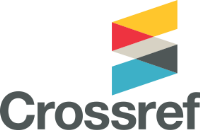CLINICAL REHABILITATION MANAGEMENT OF PERSONS WITH LATERAL EPICONDYLITIS OF THE ELBOW JOINT
DOI:
https://doi.org/10.32782/pub.health.2025.1.4Keywords:
Mulligan concept, tennis elbow, taping, Cyriax therapy, physical therapy, epicondylitisAbstract
Topicality. The article deals with lateral epicondylitis, as an inflammatory-degenerative disease affecting thetendons of the muscles of the lateral side of the forearm. Most patients are mostly able-bodied people aged 35–50 who lead an active lifestyle and regularly do sports. Pain and limitation of functional capabilities of the limb (most often leading)causes discomfort and significantly reduces the quality of life. It is noted that the repetition of the same movements can lead to an excessive load on the tendons of the elbow, causing tissue injury, and subsequently to degenerative processes.The disease has a chronic course, in which periods of remission alternate with exacerbations, in which, in addition to pain, the patient feels muscle weakness and functional limitations. The standard algorithm of rehabilitation managementis a long-term multi-stage drug, physiotherapeutic and, sometimes, surgical intervention. The request for a quick recoveryof the functional state, relief from pain and return to normal professional and sports life has become extremely urgent.The purpose of the study was to analyze modern methods of diagnosing functional disorders of the upper limb in patients with lateral epicondylitis and to develop a complex rehabilitation program of physical therapy for people withlateral epicondylitis of the elbow joint.Materials and methods: analysis and generalization of modern scientific literary sources, instrumental research methods (surveys, questionnaires, testing, PRTEE questionnaire, VAS pain scale, hand dynamometry, manual muscle testing, specific tests of Cozen, Mill, Maudsley) and methods of mathematical statistics.Research results. It is shown that the author’s rehabilitation program involving modern methods of intervention, suchas deep friction massage according to Cyriax, mobilization with movement according to Mulligan and kinesiological taping, had a high efficiency in restoring the affected limb in a short period of time, which meets the modern demand of working-age people with lateral epicondylitis. Already after the rehabilitation management, the patients of the main group noted a significant reduction in pain and improved functionality of the affected limb. Conclusions. The analysis of the obtained indicators in the main group indicated a significant decrease in the average indicators of pain intensity according to the VAS scale from 6.3 points to 1.7 points; the results of dynamometry also indicated an increase in hand strength from 35.8 kg at the beginning to 48.8 kg at the end of the study. There is also an increase in the strength of the extensors of theinjured limb according to MMT indicators from 2.63 points at the beginning of the study to 4.8 points at the end. The average value of the PRTEE questionnaire was 31.2 points, while at the beginning of the study this indicator was 79.7 points. Thus, after calculating the reliable value for each parameter, we obtained statistically significant results (p<0.05).Patients also noted the comfort of taking the course, because the interventions did not take much time and did notcause significant discomfort. The favorable evaluation from the study participants also allows us to recommend the program for use in rehabilitation facilities, because the patient-centered approach is the leading one for the modern fieldof health care.
References
Скаба Ю. Ю., Пашкевич С. А. Сучасні програми фізичної терапії пацієнтів з діагнозом латеральний епікондиліт на післялікарняному етапі. Фізична реабілітація та рекреаційно-оздоровчі технології. 2020. № 5(2). С. 38–53.
Пустовойт, Б., Пашкевич, С., Дугіна, Л. Фізична терапія хронічної латеральної тендопатії ліктьового суглоба (ліктя тенісиста). Slobozhanskyi Herald of Science and Sport. 2020 № 5(79). С. 45–51.
Без’язична О. В., Полковник-Маркова В. С. Бальна оцінка впливу реабілітаційної програми на клініко-функціональний стан тенісисток після перенесеного епікондиліт. Фізична реабілітація та рекреаційно-оздоровчі техноло- гії. 2017. № 2. С. 17–23.
Супруненко М. В. Сучасні погляди напричини, симптоми, профілактикута лікування травм руки в тенісі. Науковий часопис Українського державного університету імені Михайла Драгоманова. 2023. № 15, (1(159). С. 132–136.
Eckert A. Lateral Epicondylitis: A Review of Epidemiology, Pathophysiology, Diagnosis, and Treatment. Journal of Hand Surgery. 2023. 48(10), Р. 1120–1130.
Siminska J., Piektun K., Ogurkowski K., Stocka J., Dejewska J., Nowacka K., Hagner W., Schorzenia w obrębie stawu łokciowego. Łokieć tenisisty- schorzenie i współczesne metody leczenia. Journal of Education, Health and Sport 2015. 5, p. 205‒218.
Клінічна анатомія верхньої кінцівки : посібник / В. І. Півторак, О. Б. Кобзар, М. П. Булько, В. Г. Костюк. Вінниця : Нова Книга, 2017. 160 с.
Feltner M. E., Bishop E. J., Perez C. M. Segmental and kinetic contributions in vertical jumps performed with and without an arm swing. Res Q Exerc Sport. 2004. Р. 216–230.
Niedermeier S.R., Crouser N., Speeckaert A., et al. A survey of fellowship-trained upper extremity surgeons on treatment of lateral epicondylitis. URL: https://www.researchgate.net/publication/324604563_A_Survey_of_Fellowship-Trained_Upper_Extremity_Surgeons_on_Treatment_of_Lateral_Epicondylitis.
Sathyamoorthy P., Kemp G.J., Rawal A. Development and validation of an elbow score / Rheumatology (Oxford). 2004. Vol. 43 (11). Р. 1434–1440.
Timmerman L.A., Andrews J.R. Arthroscopic treatment of posttraumatic elbow pain and stiff ness. Am. J. Sports Med. 1994. Vol. 22 (2). P. 230–235.
Полковник-Маркова В. С., Без’язична О. В. Засоби реабілітації при епікондилітах ліктьового суглоба: матеріали XVII Міжнародної науково-практичної конференції «Фізична культура, спорт і здоров’я людини: стан, проблеми та перспективи». Харків, 2017. С. 283–286.
Основи діагностики ,лікування та профілактики захворювань кістково-м’язової системи та сполучної тканини : навчальний посібник / В. А. Візір, В. В. Буряк, С. Г. Шолох, І. В. Заіка, В. В. Школовий. Запоріжжя : ЗДМУ, 2021. 174 с.
Бісмак О. Роль мануального м’язового тестування під час оцінювання функціональних порушень при периферичних невропатіях верхньої кінцівки. Теорія і методика фізичного виховання і спорту. Київ : Олімпійська література. 2019. С. 37–41.
Timmerman L.J., Andrews J.R. A clinical evaluation system for lateral epicondylitis. Journal of Orthopaedic & Sports Physical Therapy. 2004. 20(2). Р. 108–116.
O’Driscoll S.W., Morrey B.F., Korinek S., An K.N., Diduch D. The Mayo elbow performance score. A reliable and valid measure of elbow function. Journal of Bone and Joint Surgery – American Volume. 1991. 73(8). Р. 1209–1214.
Smidt G.P., O’Connor S.J. Validation of a patient-reported outcome measure for lateral epicondylitis. Journal of Hand Therapy, 2006. 19(4), Р. 412–420.
Christopher M. Powers. Priorities for Orthopaedic and Sports Physical Therapy Research: Assessing Outcomes or Understanding Mechanisms? Journal of Orthopaedic & Sports Physical Therapy. 2003. P. 219–220.
Жаворонкова Т. М. Сучасний підхід до відновлення функціонального стану верхньої кінцівки при латеральному епікондиліті ліктьового суглобу : кваліфікаційна робота магістра спеціальності 227 "Фізична терапія, ерготерапія / наук. керівник О. В. Бессарабова. Запоріжжя: ЗНУ, 2023. 80 с.








